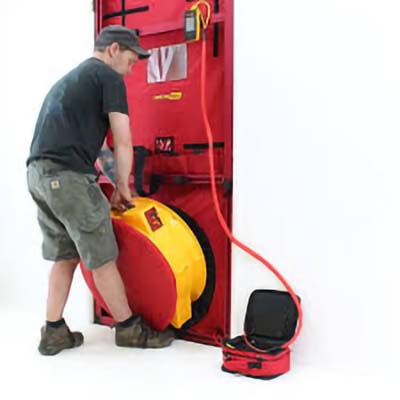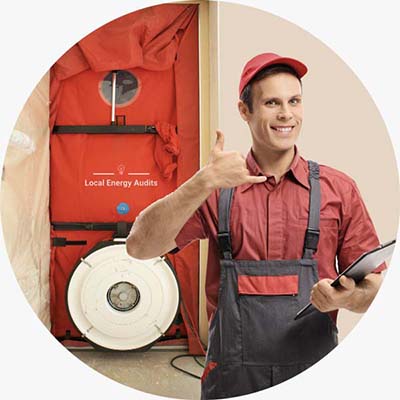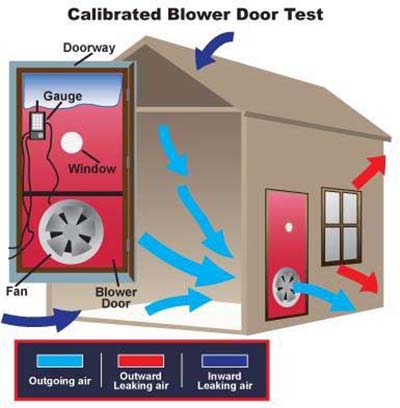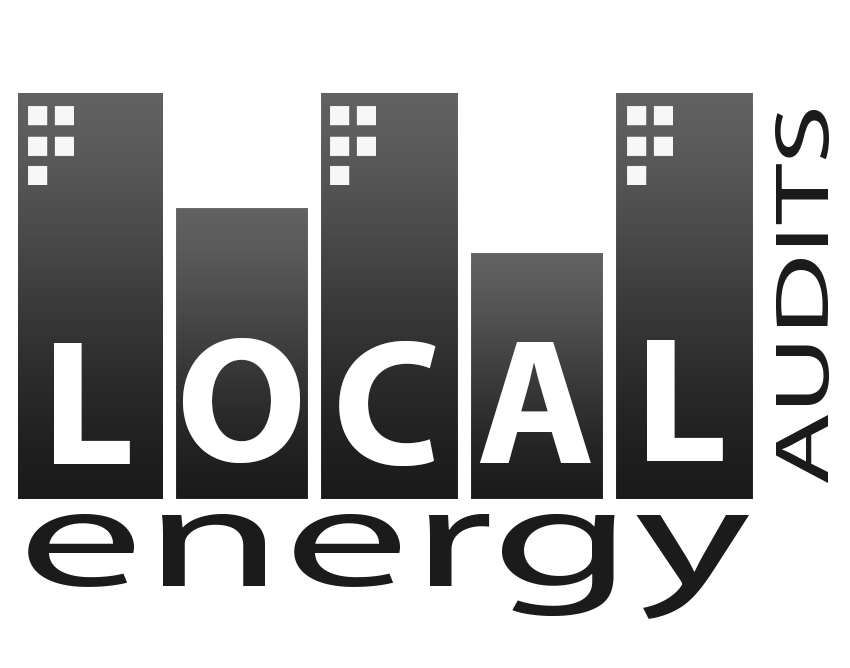Blower Door Test in Crandall, TX | Certified Energy Testing
When constructing a new home or multi-family dwelling in Crandall, TX, a blower door test is typically needed to comply with the 2018 International Energy Conservation Code (IECC).
Our team of highly trained and certified energy testers offers precise blower door and duct leakage testing to make sure your project follows all Texas energy codes. Our specialists are dedicated to finding air leakage issues that can decrease energy efficiency, degrade air quality, and raise heating and cooling bills. Whether you’re a builder, contractor, or homeowner, we offer quick, budget-friendly, and certified blower door testing in Crandall, TX, and nearby areas.

What Is a Blower Door Test?
- Energy efficiency – Unsealed homes lead to excessive energy loss, raising electricity costs.
- Indoor air quality – Unchecked air leaks can introduce outdoor pollutants and allergens indoors.
- HVAC performance – Air leakage forces HVAC systems to work harder.
- Comfort levels – Leaky homes suffer from drafts and unstable indoor temperatures.
How Does a Blower Door Test Work?
A blower door test involves a high-powered fan installed on an exterior door to generate a pressure difference between a home’s interior and exterior. The device measures the amount of air leaking into a home through cracks, gaps, and other unsealed openings. If a house experiences high air leakage, air sealing and insulation upgrades might be needed.

Do You Need a Blower Door Test in Crandall, TX?
In Crandall, TX, the 2018 IECC requires a blower door test for all new residential buildings to confirm compliance with energy efficiency regulations.
You may also need a blower door test if:
✔ Your new home construction must successfully pass the final energy efficiency inspection.
✔ Your energy bills are high and you suspect excess air leakage.
✔ You experience drafts, uneven heating, or poor indoor air quality.
✔ You are applying for an energy efficiency rebate or certification.
For homes or projects needing a blower door test, we offer rapid scheduling, instant results, and certification for energy code compliance.

Texas Energy Code Requirements for Blower Door Testing
Under the 2018 IECC, homes built in Texas must adhere to these air tightness standards.
- 3-5 (Air Changes Per Hour at 50 Pascals) depending on location.
- Homes exceeding this air leakage limit may require additional air sealing measures.
Additionally, when HVAC components such as ductwork or an air handler are positioned outside the conditioned space, a duct leakage test must be conducted.
Our Blower Door Testing Process
By scheduling a blower door test in Crandall, TX, our certified team follows a comprehensive process to ensure compliance:
Step 1: Preparation
- All windows and doors are securely closed.
- HVAC systems and exhaust fans are turned off.
- A blower door fan is installed in the main entryway.
Step 2: Conducting the Test
- The blower door fan artificially lowers air pressure in the home to simulate everyday leakage patterns.
- High-precision digital gauges track air infiltration rates and pinpoint leakage areas.
Step 3: Test Report & Certification
- A complete blower door test report is included to verify energy code compliance.
- If needed, we assist in resolving air leaks so your home can pass the inspection.
With our quick, reliable, and hassle-free approach, your project remains on time.

Why Choose Us for Blower Door Testing in Crandall, TX
When you trust our team for blower door testing in Crandall, TX, you can expect:
✔ Certified Energy Experts – Fully licensed and trained professionals.
✔ Fast Scheduling – We work around your project timeline.
✔ Same-Day Results – Receive a certified test report immediately.
✔ Affordable Rates – Competitive pricing with no hidden fees.
✔ Duct Leakage Testing Available – One-stop compliance for all Texas energy codes.

Schedule Your Blower Door Test in Crandall, TX Today!
In need of a blower door test in Crandall, TX? We streamline the process for your peace of mind. Contact us today to set up your test and ensure your project follows Texas energy code standards.



